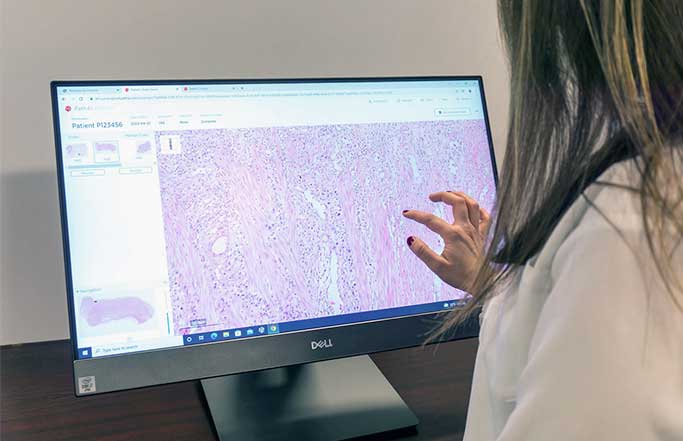PathAI, a leading provider of AI-powered pathology, will give a late-breaker presentation on new results from analytical and clinical validation studies that tested their AIM-NASHTM product and workflow’s accuracy, repeatability, reproducibility, and clinical validity across thousands of samples from several clinical trials, at the European Association for the Study of the Liver’s International Liver Congress 2023 (EASL), which will be held in Vienna, Austria from June 21 to 24, 2023. During EASL, PathAI will also formally launch and release details on its new NASH ExploreTM product.
PathAI’s analytical and clinical validation studies demonstrated that AIM-NASH-assisted pathologist reads of NASH resolution, hepatocellular ballooning, and lobular inflammation were superior to unaided pathologist assessment. Notably, there was a large improvement in scoring accuracy for ballooning and lobular inflammation, which are two of the most challenging components to score and standardize across pathologist reads. These results support PathAI’s vision to develop AI-powered digital pathology solutions to assist pathologists in achieving accurate and reproducible scoring, and complement prior results showing that AI-powered digital pathology is sensitive to drug effect that is not detected by categorical pathologist scoring1 2, while also having the potential to control placebo response rates in NASH clinical trials3.
“The results from these studies inspire confidence in the robustness and value of AIM-NASH, and will pave the way to ultimately adopting AI-assisted NASH scoring as our new gold standard to ensure the greatest confidence in measuring true drug effect in NASH clinical trials,” said Stephen Harrison, M.D., chairman of Summit Clinical Research and a pioneer in the field of liver research and lead author on the study.
At EASL, PathAI is also unveiling NASH Explore, an AI-derived panel of >500 histopathology features that spatially characterize NASH biopsy tissue microarchitecture at the cellular-level from H&E whole-slide images. It characterizes the H&E liver biopsy microenvironment at unprecedented resolution, giving drug developers and clinical researchers the ability to unlock insights that will enable precision drug development in non-alcoholic steatohepatitis (NASH).
“Manual ordinal histologic scoring of fat, inflammation, ballooning and fibrosis from liver biopsies has been the gold standard in NASH assessment for enrollment and therapeutic efficacy, but the NASH community has been pushing for more,” said Andy Beck, M.D., Ph.D., chief executive officer and co-founder of PathAI. “NASH Explore will help uncover new histologic signatures and biomarkers of therapeutic response that could be even more predictive of patient outcomes, and provide more precision in stratifying patients for targeted therapies.”
In response to the NASH community’s request for more sensitive measures of fibrosis that can be seamlessly integrated into existing clinical trial workflows, NASH Explore was developed to not only infer the presence of fibrosis in whole slide images of H&E-stained tissue sections, but also 1) categorize fibrosis into clinically relevant subtypes, and 2) quantify the presence of these fibrosis subtypes in liver lobular zones. By enabling sensitive, specific fibrosis detection from whole slide images (i.e., without requiring proprietary scanning of physical glass slides), NASH Explore allows for rapid and scalable interrogation into patterns of fibrosis that reflect true disease progression and regression.
NASH Explore complements PathAI’s current AIM-NASH product, an AI-powered digital pathology tool that assists pathologists in performing NASH CRN scoring.

